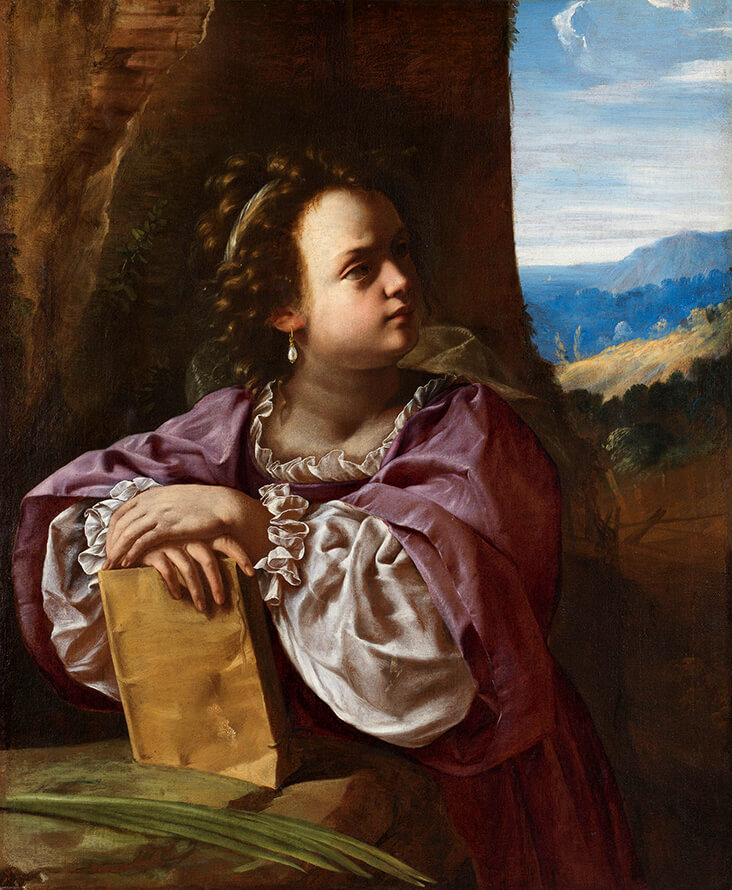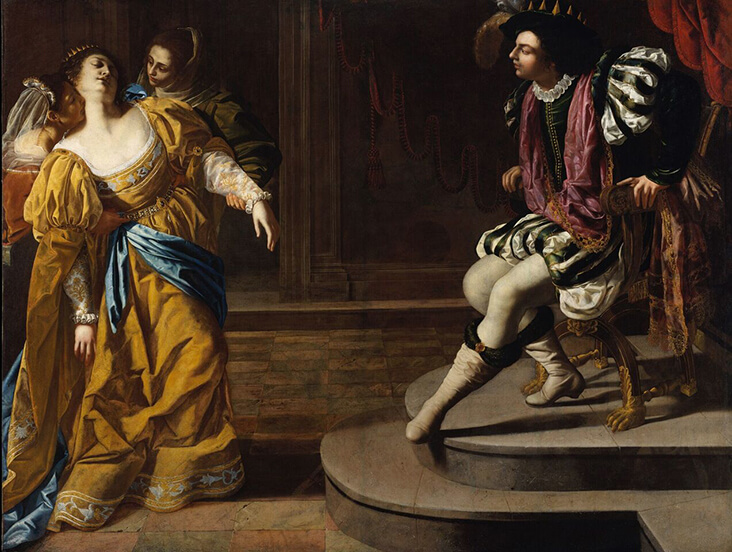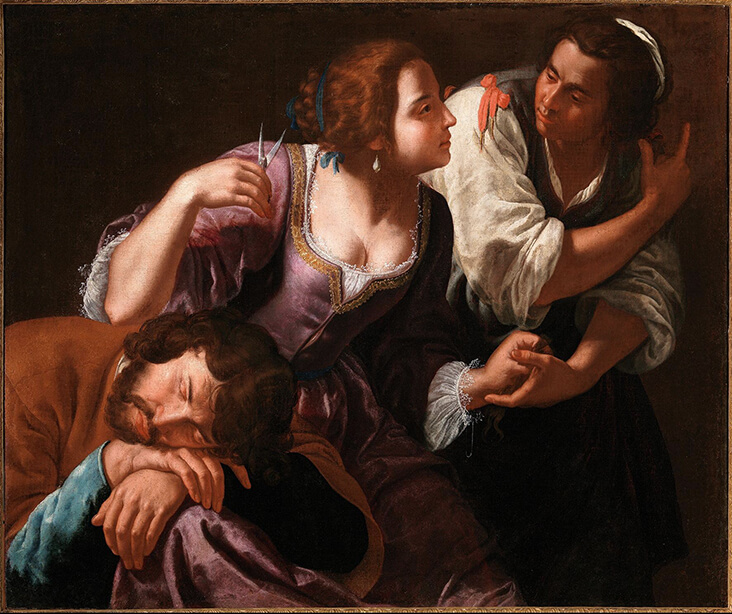FS Colour Series: Renaissance Rose Inspired by Artemisia Gentileschi’s Berry Tones
Artemisia Gentileschi was the foremost female painter of the 17th century, working for prestigious clients across Rome, Florence, Venice and Naples. Like many painters of the Baroque era, her art was dark, brooding, and mysterious, telling tales of martyred women from throughout history with theatrical, directional lighting and indulgently painted fabrics. She often coupled earthy shades of brown, ochre and red with rich, regal berry tones like Renaissance Rose, creating sharp, tart accents to pull us into the heart of the story and keep us hooked.
Gentileschi was born in Rome in 1593. She trained as a painter with her father, the esteemed artist Orazio Gentileschi, at a time when few such opportunities were available to women. Living and breathing art from a young age had a marked impact on her, and she hit the ground running, producing exceptional art from her early teenage years onwards. The tenebrism, chiaroscuro and raking light of her fellow Baroque painters made its way into Gentileschi’s art, yet she also developed her own distinctive way of telling a story, with strong female characterisation, dynamic body-language and the careful depiction of contrasting fabrics that seem to shimmer and glisten in the light.
Gentileschi married the Florentine artist Pierantonio di Vincenzo Stiattesi in 1612, and the pair moved to Florence in search of work. Remarkably for the time, Gentileschi had five children, while also establishing herself as an independent artist of great repute. During her early Florentine period Gentileschi made several paintings based on the Biblical martyr St Catherine, including St. Catherine of Alexandria, 1615-20. In this painting St Catherine is studious and determined, clutching a book while looking defiantly over one shoulder into the distance. In amongst the dry, barren scenery, her voluminous sleeves and dark raspberry cloak in satin finish stand out with glowing magnificence, lending her an air of regal gravitas.
In 1620, ensuing debts forced Gentileschi to flee Florence for Naples, where she was able to make a fresh start. From there she ran a busy, successful studio for the rest of her life. Gentileschi’s paintings during this time became increasingly complex, demonstrating her growing scope and ambition. In Esther Before Ahasuerus, 1628-30, Gentileschi paints the Jewish heroine Esther challenging her husband, King Ahasuerus of Persia to call off a massacre, thus risking her own life in the process. Gentileschi broke with historical renditions of the story, choosing to create her own daring, theatrical composition in which figures are caught suspended mid-action – she paints Esther fainting just before the concerned king leans forward, ready to grant her wish. Colour plays a vital role in the storytelling, as Esther’s warm, yellow-ochre dress contrasts sharply with the deep purple shawl draped around the king’s shoulders.
Samson and Delilah, 1630-38 is equally as bold, exploring how dynamic body language, indulgent fabrics and experimental colours can tell vivid portrayals of old stories in daring new ways. Once again Gentileschi paints a story with a strong female lead at the centre. Delilah is dressed in purple satin, which the artist paints with exquisite attention to surface detail, contrasting it with a shimmering gold trim along her neckline. Gentileschi skilfully conveys the play of light across the fabric’s shiny surface as it ripples across her body, caught suspended in the moment just before Samson’s hair, the source of his strength, is cut away. Deep purple contrasts sharply here with a series of warm earthy shades, while high contrast passages of dark, to the left, and white, to the right, highlight Delilah’s central role in this story, as one of the most famous and cunning villainesses of all time.















































One Comment
Doris Eugenio
Once again, an excellent and enlightening article! Thank you Rosie!